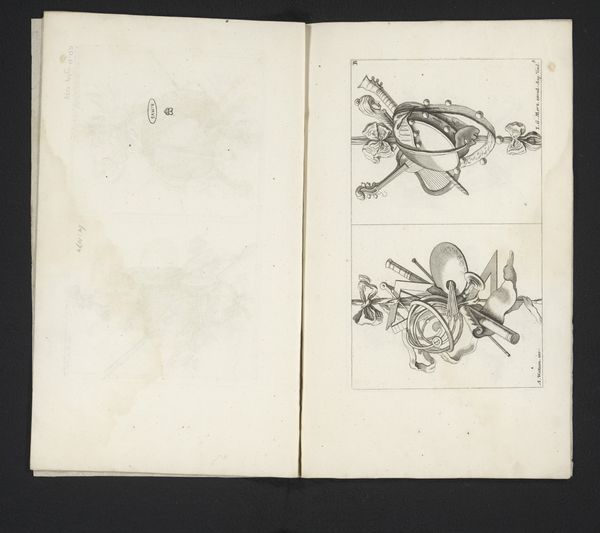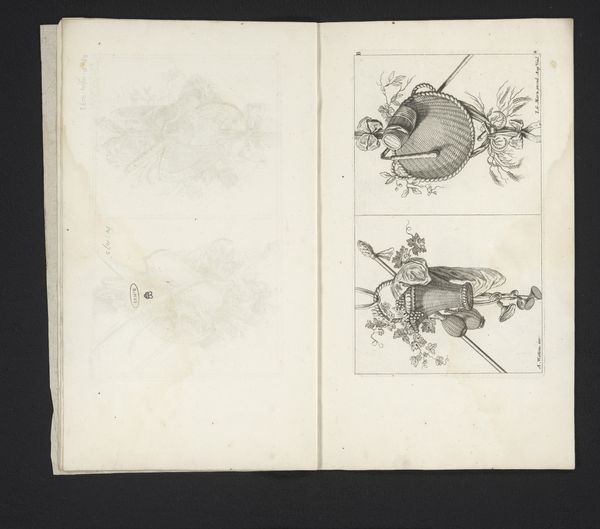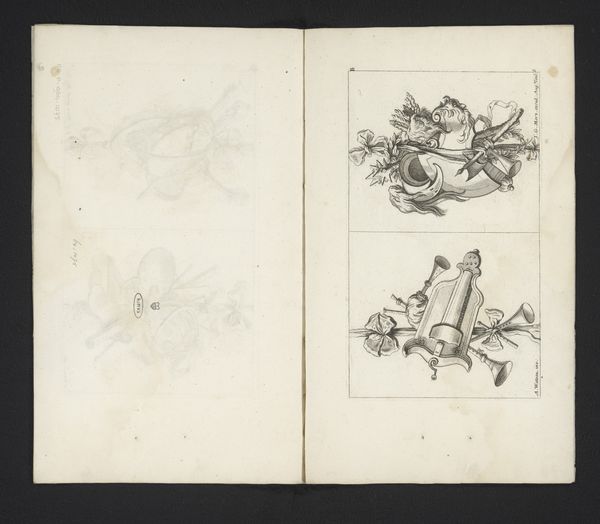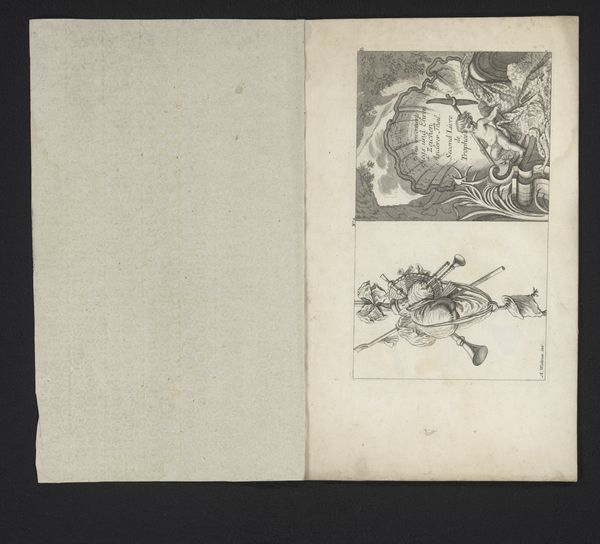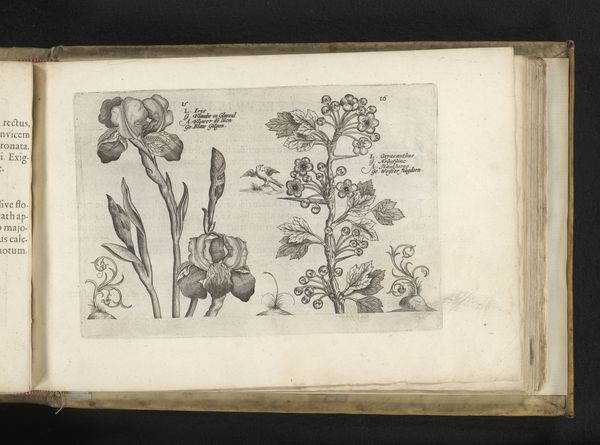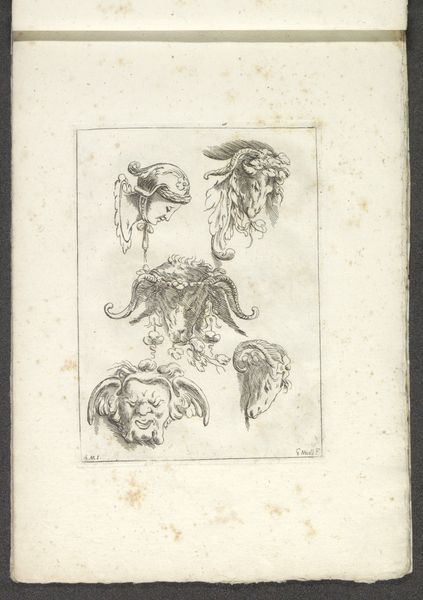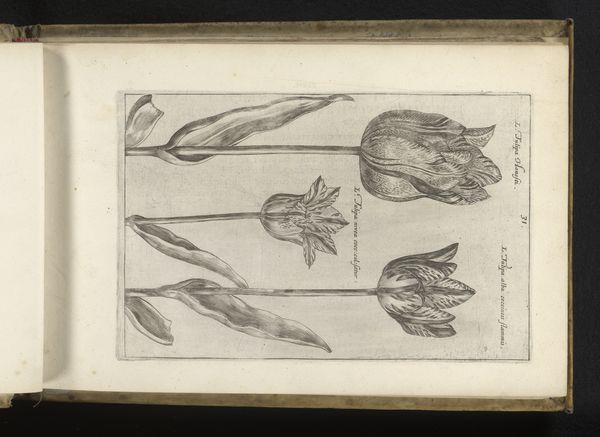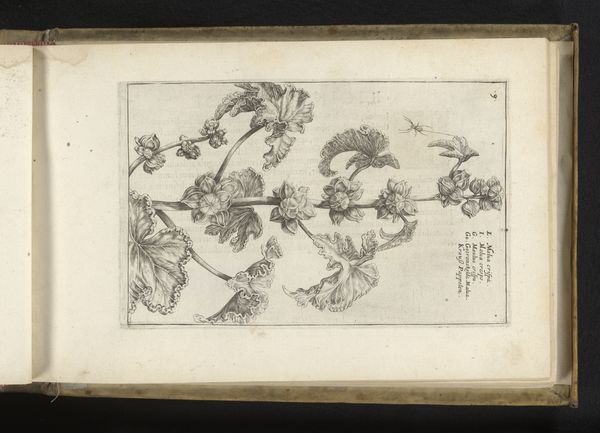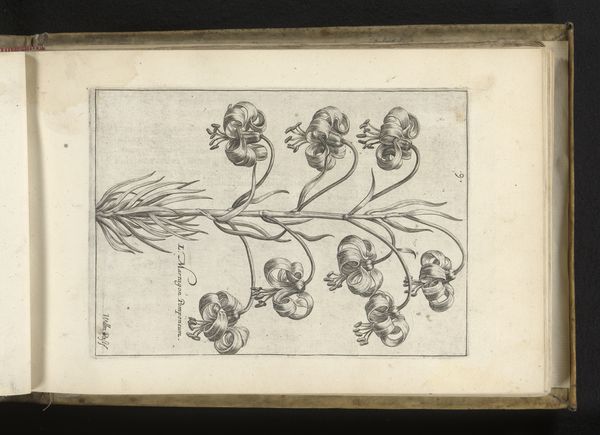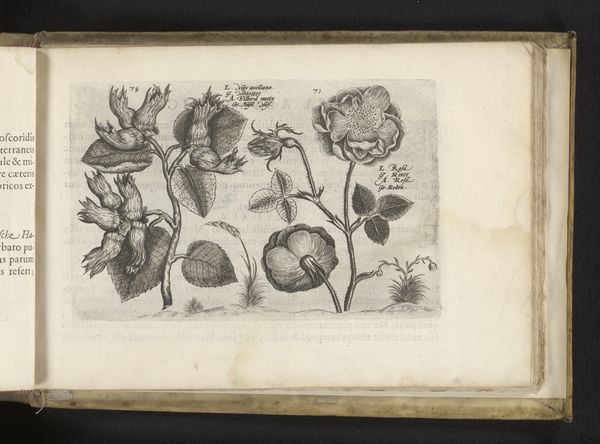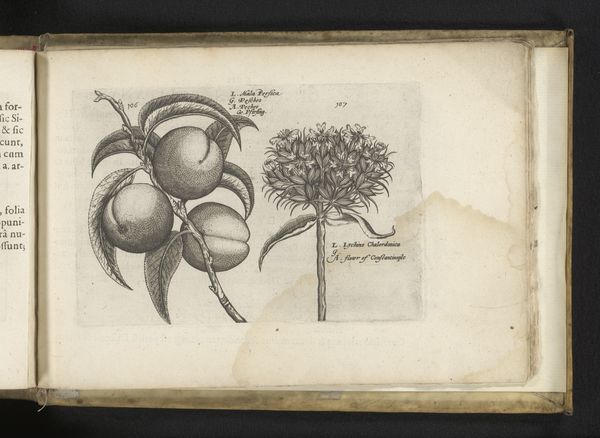
drawing, print, engraving
#
drawing
#
baroque
# print
#
line
#
engraving
Dimensions: height 143 mm, width 246 mm
Copyright: Rijks Museum: Open Domain
Curator: Take a look at "Trophy with Musical Instruments and Hunting Trophy," an engraving likely created between 1704 and 1762, part of the Rijksmuseum's collection. Editor: There's something austere, almost melancholic, about the still life arrangements; the crisp line work against the stark background lends a feeling of almost eerie precision to the grouping of these symbolic objects. Curator: Let’s unpack those symbols, starting with the upper composition, featuring what appear to be spoils of the hunt--a hunting horn, a rifle, the game, and a suit of armor. How might that relate to the other arrangement, showcasing musical instruments and scores? Is it about contrasting the refinement of artistic practice against the brutality of hunting and warfare, or suggesting harmony between opposing activities and personalities, perhaps? Editor: I’m drawn to how seemingly disparate elements are deliberately juxtaposed here: weaponry beside game beside musical instrument. This evokes what's known as 'Vanitas,' where symbolic objects like musical instruments serve to prompt thoughts on human accomplishment and the arts as it stands against temporal life and eventual death. Consider the helmet's role as protective gear morphing to encase hunting spoil... Curator: This is Baroque art doing what it does best: creating dialogues and juxtapositions between seemingly contradictory motifs. One way to read it might be as an illustration of power dynamics in this historical moment. Hunting was typically restricted to nobility, while music and the arts represented accomplishments available to all educated individuals, the burgoise class. So this engraving might comment on who gets access to instruments, which is still so relevant today when art programs get slashed while war budgets keep getting larger. Editor: Absolutely! It speaks of cultural memory and enduring value through carefully coded symbolism. What does trophy really mean for who? In addition to what you shared, I believe that its cultural roots tie it into an expression of continuity from Renaissance concepts on classicism and antiquity... Do note the musical notations: where do they point, and for whom are those scores kept, who is afforded time to play? Curator: This artwork really exemplifies how even seemingly innocuous arrangements can reveal power structures and raise uncomfortable questions when examined through different lenses. Editor: Indeed; an ostensibly simple visual can hold myriad narratives within its symbolic vocabulary—stories that echo across generations.
Comments
No comments
Be the first to comment and join the conversation on the ultimate creative platform.
